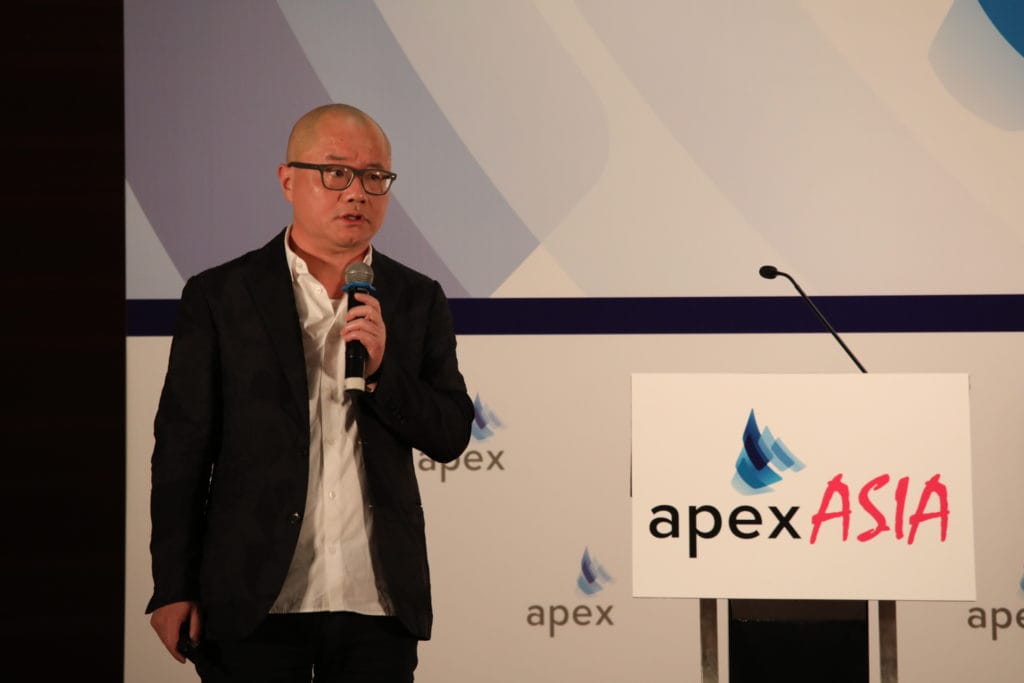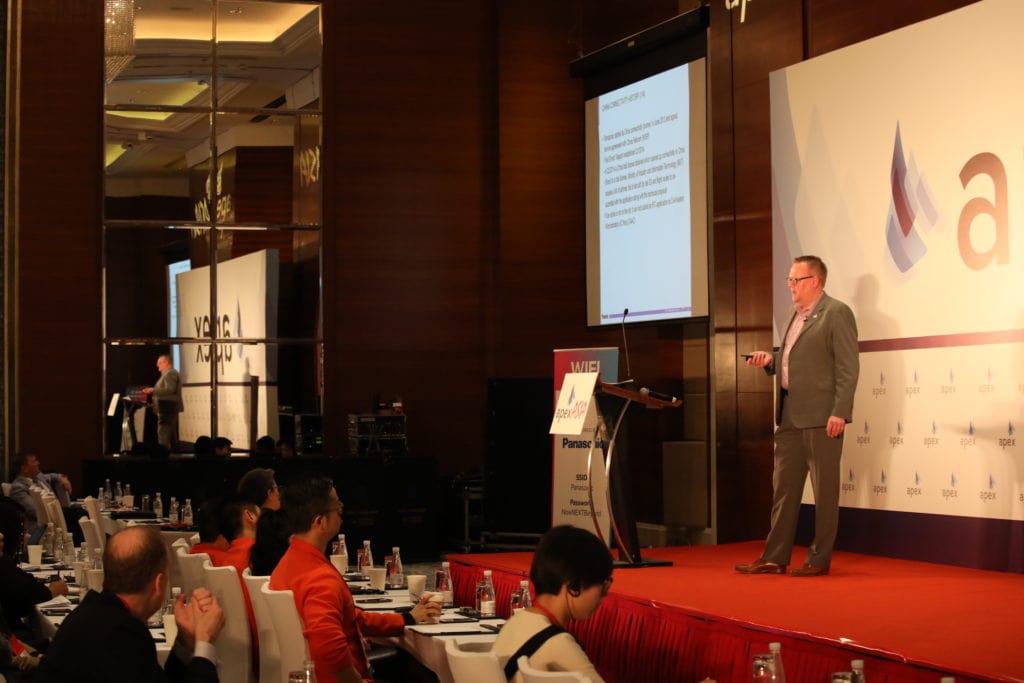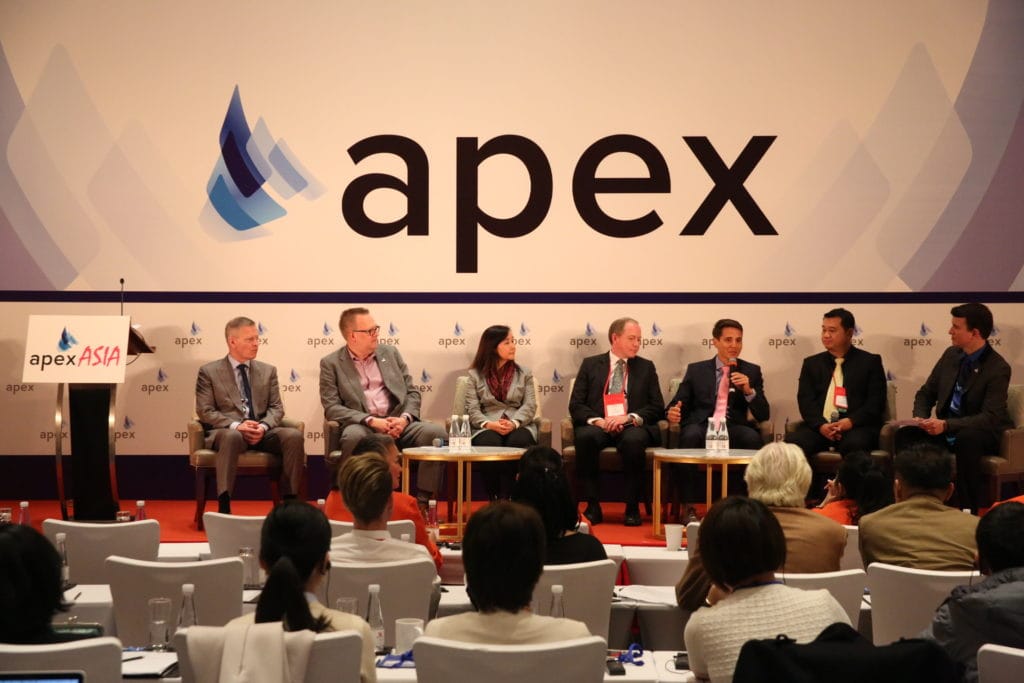Takeaways From APEX Asia: Day Two
Share


APEX Insight: The sessions on the second and final day of APEX Asia were heavily focused on the topic of in-flight connectivity in Asia, with speakers discussing the ancillary revenue opportunities that lie ahead, as well as the issues that still remain.

China’s Cabin Connectivity Market Value
With China relaxing its rules over the use of mobile devices, founder and CEO of BlueFocus IFEC Yong Li says his company is working on the best approach for the opportunity that has opened up: “We are watching very closely some of the major connectivity initiatives in our country such as satellite licenses being issued and how they are going to benefit airlines and passengers.” Li said a common view among small- and medium-sized airlines is that the cost of IFEC is very high. To make connectivity profitable for airlines, they need to figure out how to foot the bill through advertising and sales, which in flight, have the advantage of a captive audience. Lastly, Li added, “We need to look at the challenges we’re facing in a truthful way so we can complement and learn from each other, to make China’s IFC even better.”

Gateway to Asia: Wi-Fi Over India
On behalf of Jet Airways’ head of Guest Experience, Narendra Mansukhani, APEX CEO Joe Leader spoke about the rise in consumer living standards, growing air travel frequency and the easing of regulatory restrictions, which are contributing to the anticipated growth of in-flight connectivity in India. While smartphone penetration may appear comparatively low in the country compared to the rest of Asia-Pacific, Leader emphasized that, in a country as populous as India, it accounts for a third of a billion people.
“Putting on his APEX hat,” as he put it, Leader made one major announcement during the session, saying, “We are definitively convinced that India will open Wi-Fi over its airspace this year. We believe that will happen in Q2 to Q3.” Until then, he urges airlines that fly over “Wi-Fi blackout zones” to inform their passengers before connectivity drops in flight. “Warn your customers – give them a countdown,” he added.

IFC Adoption: Better Late Than Never
The amount of airlines keen on delivering in-flight connectivity to their passengers is encouraging, but not every airline has decided. “We as individuals tend to feel we’re falling behind the curve when it comes to adopting new technology – the same goes for a vast number of airlines,” said Daniel Welch, co-founder of Valour Consultancy. “We shouldn’t panic because that’s what results in a rushed decision.”
Welch also points to the fact that some airlines are holding back on IFC adoption due to lack of education. “Events like this really help because they enable us to talk among ourselves about successes, challenges and opportunities.” As for discussion about IFC between airline departments, this could be improved on, too. “The amount of airlines I interviewed that haven’t yet aligned internally on how they could benefit from IFC is astounding,” he said, adding that when putting together a new tender, it’s crucial to involve others to see who else could benefit from connectivity, creating a stronger business case for adoption.

Panasonic’s In-Flight Connectivity Journey in China
After providing an overview of Panasonic’s connectivity initiatives in China, from its first service agreement signed in June 2013 to reaching a total of 120 equipped aircraft, the company’s senior director of Marketing, Jon Norris, invited Jason Li, CEO of APT Mobile Satcom (APSATCOM) join him on stage to discuss the companies’ recent partnership on extreme throughput (XTS) connectivity coverage over the Asia-Pacific region.
The APSTAR-6D satellite will provide Panasonic’s customers with Ku-band capacity over China and high-density routes around major East Asian cities using narrow XTS spot beams. Speaking about the capacity afforded by the XTS satellite deal, Norris said, “We are at the point now where we are not held back by technology. We can provide more capacity to an aircraft than passengers are prepared to pay for.”

How to Pay Off the Heavy Cost of IFC
In-flight connectivity providers on this panel raised concerns about bandwidth demand in China, the cost of connectivity and the right business model to apply for in-flight Wi-Fi. “Look at the aircraft coming into operation. We are going to have a supply problem sooner than later,” said James Hooper, strategist, Asia Pacific, SES Networks. “And it’s both Chinese and international airlines we have to think about.” Meanwhile Jon Norris, Panasonic Avionics’s senior director of Marketing, and APEX board member, said it’s for this very reason his company takes a multilayered approach, leasing capacity from over 10 satellite operators.
And while IFC is an expensive, precious resource in the air, some feel it will eventually be complimentary. “China will not have a pay model; the experience will be provided for free. It will probably be subsidized through ticket sales – or shopping or advertising,” said JD Pauly, Business Development, Thales. Serena Li, Inmarsat’s director of Market Development, Aviation, China, agreed: “Chinese passengers would tolerate advertising for a free service. The cost is watching commercials. But I have time, so I can compensate my time for value. Passengers understand that.”

How Close Are Airlines to Becoming the Amazon of Travel?
According to Andrew Cowen, CEO of U-Fly Alliance and vice-chairman of Uriel Aviation, intermediaries like Google, Alipay and Ctrip are making inroads into the travel market, and if airlines don’t begin to increase their client profiles, they risk being outshone. Citing statistics from Crucial Perspective, Cowen said that the top 20 tech companies spend an average of $6.5 billion on R&D annually, while R&D doesn’t exist as a major cost line item for most airlines. “We, the airlines, absolutely have to respond or else we will be pushed to the side,” he added.
The low-cost carriers that make up U-Fly – Eastar Jet, HK Express, Lucky Air, Urumqi Air and West Air – may fall behind most full-service Chinese carriers in terms of fleet size, Cowen said, but together they make up a stronger network for their passengers – the majority of which fall into the 18-to-35-years-old demographic. To appeal to its tech-savvy customer base, Uriel and U-Fly are working on a three-year plan to become the Amazon, Rakuten or Taobao of air travel.

Aircraft Interiors to Maximize Airline Profits
Passenger-centric design needn’t come at a cost for airlines; in fact, it could yield ancillary benefits, said Zhou Hua, airline marketing manager, North Asia and China, Bombardier Commercial Aircraft, during the last session of the two-day event. Looking at Bombardier’s C Series aircraft as an example, he said, that by making the middle seat one inch wider than the window and aisle seats, and by reducing the number of middle seats on board by opting for a 3×2 configuration (On other single-aisle aircraft, the middle seat is used after a 67% load factor, but with the C Series, it is only used after 80% load factor.), what was once a hurdle to be overcome could become a significant upsell opportunity.
Zhou also spoke about the introduction of the Atmosphere cabin interior for the CRJ, what he calls “the world’s most successful regional aircraft family.” The design includes innovative finishes, mood lighting, a PRM (persons with reduced mobility) compliant lavatory and more carry-on luggage space.
Click here for more takeaways from Day 1.


